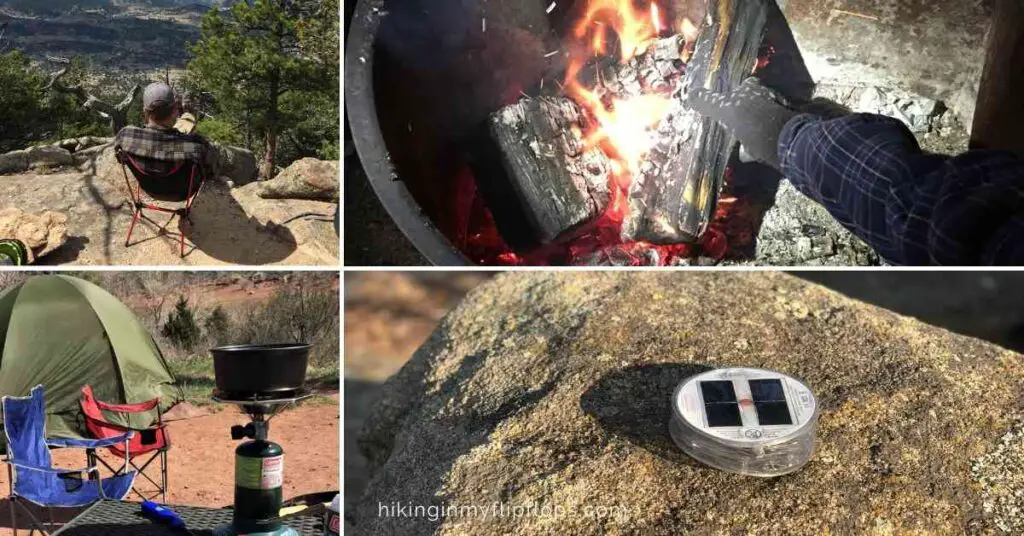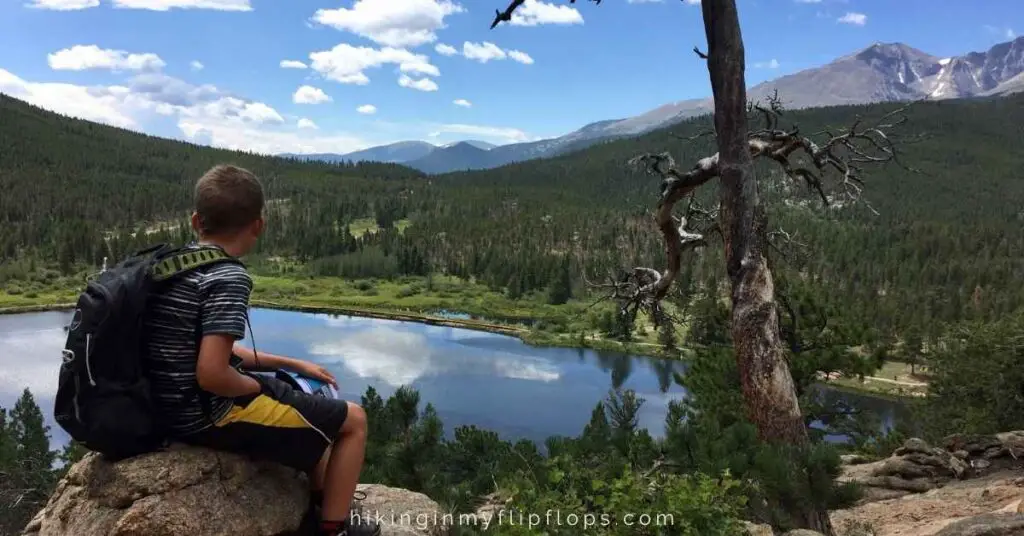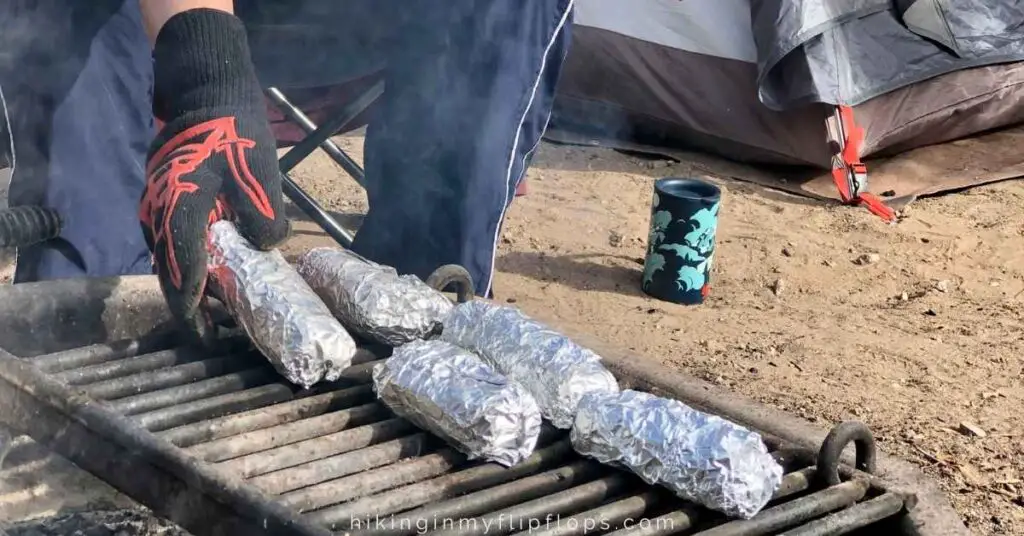A cooler full of soggy food or tossing out raw meats that weren’t appropriately chilled can ruin one of the best parts of camping: the food! Knowing how to keep food cold while camping without a daily trip to the store to stock up on bagged ice will prevent one of the most common camping mistakes. These easy yet practical tips will have your ice lasting longer on your next camping adventure.
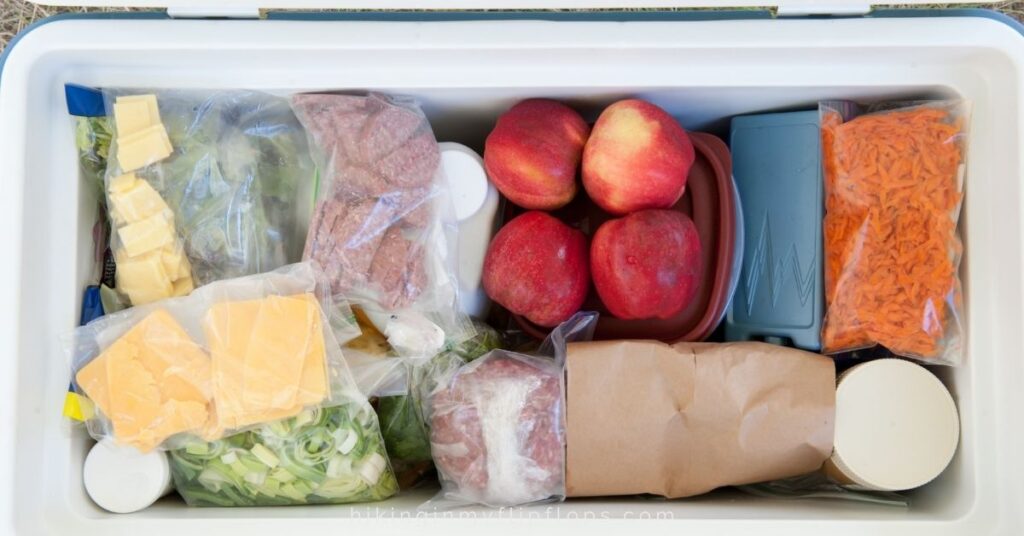
How to Make Ice Last Longer in a Cooler
Whether you are new to camping or are well experienced in the outdoors, properly storing your food is an essential part of camping. And it’s even more important to know how to keep food cold while camping during those hot summer months. Even with warm days and chilly nights during fall and spring, these tips will help you keep that cooler cold.
(This post may contain affiliate links. Please read our disclosure policy for more information.)
The Food in the Cooler
Using up the food that needs to be kept cold reduces the need for a cooler and will help you get through the camping trip without buying more ice.
1. Eat the cold things first
Plan camping meals around perishable foods so that you’re eating cold items first. Peanut butter and jelly sandwiches are on the lunch menu after turkey sandwiches. Serve perishable hot dogs before shelf-stable pasta.
2. Freeze food that will be eaten later
A lot of camping food is freezer friendly. Pack frozen soups and stews, raw meats, and bottled drinking water if you won’t use them in the first day or two.
Getting the Most Out of Your Cooler
3. Keep that lid closed
Each time someone opens the cooler, cold air escapes, and the warm air gets in, so get into the cooler only as frequently as needed. The best way to get around this is to….
4. Bring two (or three) coolers
Have one cooler just for food and a separate cooler for the drinks. Drinks are accessed more frequently and are not prone to food safety concerns.
Have a supply ready to go when ice needs to be restocked in the food or drinks cooler if there is space to bring a third cooler that holds only ice.
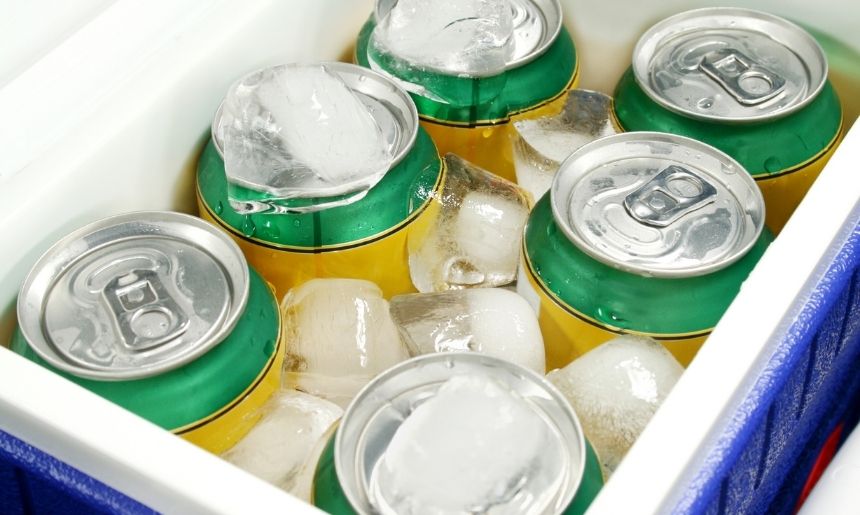
5. Organize your cooler by meal
Take the time to group foods by meal, even bagging the ingredients separately in zip-top freezer bags. When prepping for a meal, grab the bag of ingredients, and you’re ready to start cooking. There is no need to dig through the cooler for that ingredient that slipped to the bottom!
6. Prechill the cooler
We were thrilled by how well this one works. The day before you begin packing up your car for camping or other adventure, fill your cooler to the top with ice cubes or blocks of ice. Let the ice chill the cooler.
After about 24 hrs of chilling, empty the cooler, then add new ice and the food/drinks. You’ll be surprised at how well this works to keep food cold while camping!
7. Buy a good cooler
Coolers wear, warp, and crack over time. Consider investing in a durable rotomolded cooler if it’s time to update your cooler. Many manufacturers are making this type of cooler, so there are more options than the high ticket Yeti.
The construction of a rotomolded cooler is more durable than traditional coolers so the investment can go a long way. And you’ll see even more savings by buying fewer bags of ice and less food waste from coolers that aren’t holding ice well.
Jump right to our top recommendations for the best coolers for car camping
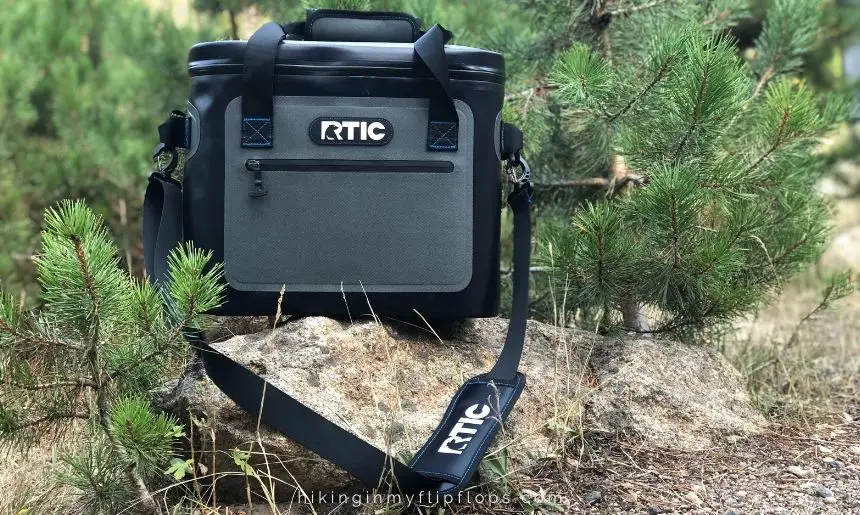
8. Insulate the cooler
Even the best cooler could use additional protection from sun and heat to make the ice last longer in a cooler. Cover or wrap the cooler with:
- damp towels over the top of the cooler
- a (dry) wool blanket or reflective insulation wrapped around the cooler
- a car window shade over your cooler
No products found.
9. Where you put the cooler matters
The best place for a cooler is away from the heat and sun, especially when camping in hot weather. Find a shady spot that is out of the direct sun. Keep your cooler out of the car and off the ground.
Cars can heat up quickly, reaching temps much higher than outside, so keep coolers out of the vehicle during the day, if possible. Note that storing coolers outside is not recommended at night, especially when camping in bear country. Locking coolers up in the car at night is always recommended!
Related Reading: The Complete Guide to Washing Dishes When Camping to Make This Outdoor Chore Easy
Keeping the cooler off the ground will allow the air to circulate throughout the cooler and keep the temperature around the cooler lower.
How to Make Ice Last Longer In a Cooler with the Right Ice
10. Use larger blocks of ice
The larger the block of ice, the longer it will take to melt. Use gallon or quart jugs, gallon zip-top freezer bags, or large ice packs in the cooler.
The smaller the ice, the faster it melts. Freeze large chunks of ice in gallon jugs or bread loaf pans for the slowest melting ice. Hotel ice machines should be used as a last resort because they make small, barely frozen ice that quickly melts.
No products found.
11. Build layers of ice
Line the bottom of the cooler with ice packs, then add ice cubes on top to create a cold foundation. Keep food that needs with most temperature control close to the ice layer.
12. Try dry ice to keep food really cold while camping
Consider using dry ice to keep food cold while camping for extended trips.
Use with caution, though. Dry ice is unsafe to touch directly and can actually keep food frozen too long.
Layers work well here too. Dry ice goes on the very bottom of the cooler, then add a protective layer of cardboard before adding food. Keep things you don’t want to be frozen on the top of the cooler, away from the dry ice.
13. Use good ice cubes
Cloudy ice cubes are not as dense as clear ice cubes and will melt faster than their clear counterparts. Avoid small or thin ice cubes like those from hotel ice machines. These have more surface area that will start melting when exposed to warmer air.
If a hotel ice machine is your only option, keep it stored in a bag to extend the life of the ice.
14. Keep (some) bagged ice in the bag
Ice in the bag prevents exposure to warmer air and other items in the cooler, helping the ice last longer in a cooler. Spread some of the cubes throughout the cooler to fill in the gaps, reserving some ice still in the bag.
15. Use salt to keep ice cold
When freezing water at home, make it a saltwater solution. Salted water melts more slowly, keeping the frozen water colder for longer. Add to the bottom of the cooler to keep it insulated from the air when opening the cooler.
The Best Coolers for Car Camping
Consider the cooler volume, trip length, and budget when choosing the best cooler for a camping trip.
Choose a cooler that is at least 70 quarts for extended camping trips and at least 50 quarts for weekend trips.
Rotomolded coolers, like the Yeti, are a great option because of their durability, but the higher price tags and weight can be deterrents.
The Best Coolers for a Long Camping Trip
Here are a few of our top picks for coolers that are large enough to get you through a long weekend camping.
Table could not be displayed.The Best Coolers for Weekend Camping
Coolers left with too much air end up with melted ice, so you’ll lose ice faster if the cooler is too large. These 50+ quart coolers are great for weekend trips and priced to stay within your camping budget.
Table could not be displayed.Top Picks for Coolers to Hold The Drinks
Drink coolers can be a little smaller because the similar size and shape of drinks let you pack things in a little more efficiently. Don’t forget to leave room for ice, though!
Table could not be displayed.Related: 5 Reasons to Add the RTIC Soft Pack Cooler to Your Camping and Travel Gear
The Best Coolers for Picnics and Hikes
Table could not be displayed.The budget-friendly Artic Zone 30-can cooler is another highly-rated option for a tote cooler. We also love the CleverMade 30-can soft-sided cooler that collapses for storage when not in use.

Keeping Food Cold When Camping FAQs
How do you keep food cold while camping? Add your best tips in the comments below!
Click below to save these ideas on how to keep food cold while camping on Pinterest!


